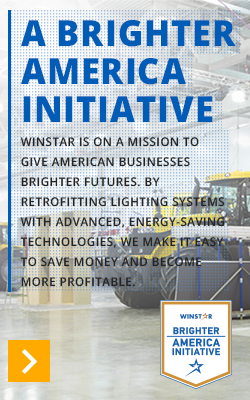How LEDs Work
LEDs (or light-emitting diodes) are unlike any other type of lighting. While conventional lamps produce light by using a gas (such as in fluorescent bulbs) or a filament in a vacuum (such as in incandescent bulbs), LEDs are actually semiconductors made of positively and negatively charged components. The positive layer is composed of holes and the negative layer of free electrons. As an electric charge strikes the semiconductor, it causes the electrons to become excited and puts them into motion. As they flow into the positively charged holes, light is emitted.
All of this takes place within a tiny microchip encapsulated in an epoxy resin enclosure. For this reason, LEDs are known as solid state lighting. LEDs can be found throughout our modern lives in digital clocks, remote controls, appliance indicator lights, and light-up watches. When combined by the hundreds, LEDs also generate television images and illuminate traffic lights.
Shatter Resistance
As solid state lights, LEDs are extremely durable and long-lasting. They will not shatter or break and are insensitive to extreme temperatures and even vibrations. As a result, they are simple to transport and install, and will continue to work under a variety of conditions. Their solid state also ensures that they produce no noise during operation.
Low Maintenance
LEDs last at least 10 times longer than mercury lighting, offering 35,000-50,000 hours of operation. Compare that with the 10,000-15,000 hours of operation of fluorescent tubes, and only 1,000-2,000 hours for incandescent bulbs, and you’ll see how long life results in drastic reductions in lamp changes and substantially reduces maintenance costs.
Infinite Colors
While conventional lighting requires filters to change color, LEDs can produce filter-free light of any color – from red and green to blue and amber and any color in between. LEDs also produce little to no infrared or UV emissions, making them ideal for sensitive materials such as those in art galleries, museums, and laboratories.
Design Versatility
By nature, LEDs offer incredible versatility. LED lamps are highly focused, so they can be directed to create specific illumination designs. LEDs can also be dimmed through pulse-width modulation or lowering the forward current, offering additional customization for applications such as classrooms, boardrooms, and airplanes.
Quick Responsiveness
When fast response times are required, LEDs are an ideal solution. Most LEDs will achieve full brightness in under a microsecond, with some LEDs attaining even faster response times.
Cycling Insensitivity
LEDs do not experience performance reductions when cycled on and off frequently, and therefore are ideal for spaces where lights are turned on and off repeatedly. By contrast, fluorescent lamps fail faster when cycled often, and HID lamps require long down times before they can be restarted. This gives LEDs greater flexibility and further reduces maintenance requirements.
Slow Failure
Mercury vapor lamps suffer from drastic lumen depreciation through use. The become ineffective within five years after losing 50% of their light output, while still drawing the same amount of energy. Likewise, incandescent bulbs will suddenly experience total failure when they’ve reached the end of life. By contrast, LEDs will slowly fail by dimming over time, but only after tens of thousands of hours of operation.
Advances in LED Technology
First generation LEDs emitted a lot of light, but because of their structure, much of the light was trapped. As a result, consumers traditionally thought of LEDs as dimmer than incandescent lights. However, today’s LED technology has advanced a great deal, with numerous solutions that offer equivalent light output to conventional bulbs and lamps. They are now in direct competition with many commercial and industrial lighting solutions.


